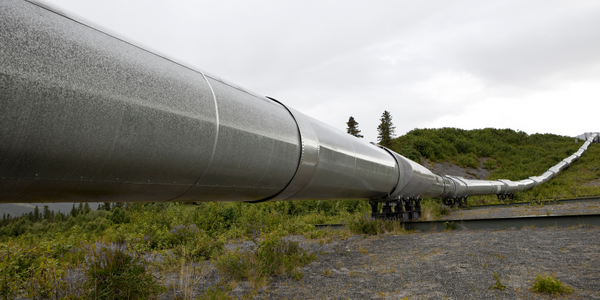Customer Company Size
Large Corporate
Region
- Europe
Country
- United Kingdom
Product
- C-Series Vessel Control System
- GENESIS32
Tech Stack
- OPC Server
- Data historian workstations
Implementation Scale
- Enterprise-wide Deployment
Impact Metrics
- Productivity Improvements
- Cost Savings
Technology Category
- Application Infrastructure & Middleware - API Integration & Management
Applicable Industries
- Marine & Shipping
- Oil & Gas
Applicable Functions
- Logistics & Transportation
- Maintenance
Use Cases
- Remote Asset Management
- Predictive Maintenance
Services
- System Integration
- Training
About The Customer
Converteam is a leading supplier of power conversion engineering. The company provides customized solutions to convert electrical energy through physical equipment such as motors, generators, and drives. In addition to manufacturing automation and process controls, Converteam serves the Marine, Oil & Gas, Energy, and Manufacturing industries. Their services are applied internationally. One of their solutions for the marine and offshore industry includes the C-Series Vessel Control System (VCS) which combines ship wide supervisory control and monitoring together in a single system, enabling operators a complete overview of all ship systems.
The Challenge
Converteam, a leading supplier of power conversion engineering, needed a reliable and efficient HMI system for their C-Series Vessel Control System (VCS) used in the marine and offshore industry. The HMI system needed to comply with standards and regulations concerning night vision and other safety measures. It also needed to be extensible, modular, flexible, and have good connectivity. The company had tried several other HMI systems but they failed in these key areas. The HMI system was to be implemented in a fleet of LNG tankers designed to transport liquefied natural gas.
The Solution
Converteam selected ICONICS’ GENESIS32 as the standard HMI for their C-Series Vessel Control System. This decision was made after comparing several other HMI systems that failed in key areas of extensibility, modularity, flexibility, and connectivity. In marine and offshore applications, HMI faces unique issues. HMI displays located on the bridge must comply with standards and regulation concerning night vision and other safety measures. Aboard ships where Converteam’s C-Series VCS is implemented, ICONICS’ GENESIS32 screens have three modes to enable the bridge crew better external observation: one for daylight, one for dusk and dawn, and one for night. GENESIS32 screens further ensure safety and convenience with touch-screen drivers and oversized symbols for “finger-sized” use.
Operational Impact
Quantitative Benefit

Case Study missing?
Start adding your own!
Register with your work email and create a new case study profile for your business.
Related Case Studies.

Case Study
Taking Oil and Gas Exploration to the Next Level
DownUnder GeoSolutions (DUG) wanted to increase computing performance by 5 to 10 times to improve seismic processing. The solution must build on current architecture software investments without sacrificing existing software and scale computing without scaling IT infrastructure costs.

Case Study
Remote Wellhead Monitoring
Each wellhead was equipped with various sensors and meters that needed to be monitored and controlled from a central HMI, often miles away from the assets in the field. Redundant solar and wind generators were installed at each wellhead to support the electrical needs of the pumpstations, temperature meters, cameras, and cellular modules. In addition to asset management and remote control capabilities, data logging for remote surveillance and alarm notifications was a key demand from the customer. Terra Ferma’s solution needed to be power efficient, reliable, and capable of supporting high-bandwidth data-feeds. They needed a multi-link cellular connection to a central server that sustained reliable and redundant monitoring and control of flow meters, temperature sensors, power supply, and event-logging; including video and image files. This open-standard network needed to interface with the existing SCADA and proprietary network management software.

Case Study
Refinery Saves Over $700,000 with Smart Wireless
One of the largest petroleum refineries in the world is equipped to refine various types of crude oil and manufacture various grades of fuel from motor gasoline to Aviation Turbine Fuel. Due to wear and tear, eight hydrogen valves in each refinery were leaking, and each cost $1800 per ton of hydrogen vented. The plant also had leakage on nearly 30 flare control hydrocarbon valves. The refinery wanted a continuous, online monitoring system that could catch leaks early, minimize hydrogen and hydrocarbon production losses, and improve safety for maintenance.









